Finding a horseradish substitute is easier than you may think. So, if you have an allergy to horseradish or don’t have any in the kitchen, we have five alternatives for you. We searched for ingredients that pack some spicy heat, as that’s what you get from horseradish.

5 Options If You Don’t Have Horseradish
1. Wasabi paste
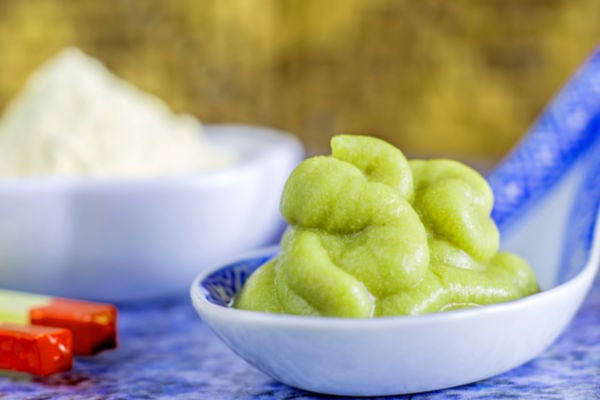
Wasabi paste is the best option for replacing horseradish, as they share a similar flavor profile and are from the same Brassica family. Outside of Japan, most wasabi paste is a mix of horseradish and green coloring, so the difference between the two is minimal.
The main problem with wasabi is its vivid green pigment, which may not be suitable for some dishes. If you’re serving roast beef with a cream sauce, then the green shade will look out of place. For most other recipes, though, wasabi will do the job nicely.
How much to use?
I’ve seen cooking websites recommend increasing the amount of horseradish by 50%. I’d suggest using caution when using it in your cooking. Some wasabi can pack a punch, so test with a small amount and increase if necessary.
Health warning: If you’re looking for a backup option because of allergies, then avoid wasabi in root or paste form as it is closely related to horseradish.
2. Brown mustard
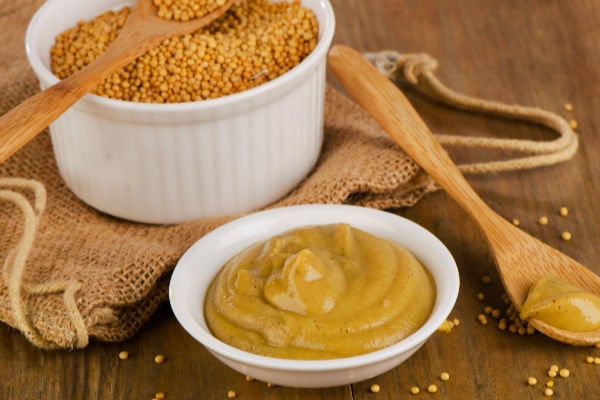
Like wasabi, mustard is also part of the same family as horseradish, so it packs a similar heat. Brown mustard has a high concentration of seeds, which gives it a pungent, peppery flavor profile that mimics horseradish to some extent.
Visually, brown mustard is a better option than wasabi. It is a light brown color, which is a closer match to the off-white color offered by horseradish.
Note: If you're looking for a good Dijon mustard substitute then check out this resource.
How much to use?
Use equal quantities when substituting brown mustard for horseradish.
3. Fresh ginger
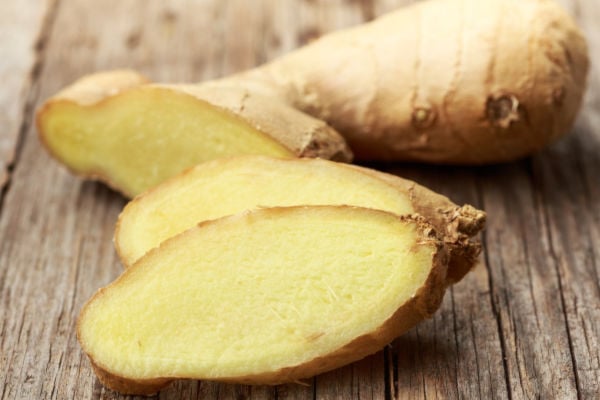
Fresh ginger has a unique flavor that is a mix of earthy and lemony flavors. It starts to warm up slowly on the tongue but isn’t anywhere near as hot as horseradish.
How much to use?
You’d need more ginger than horseradish to achieve more heat; however, the flavor of the dish could start to taste unpleasant if too much is used. Your best option is to use conservative amounts of ginger and accept that the heat will be less than in the original recipe.
4. Black Radish
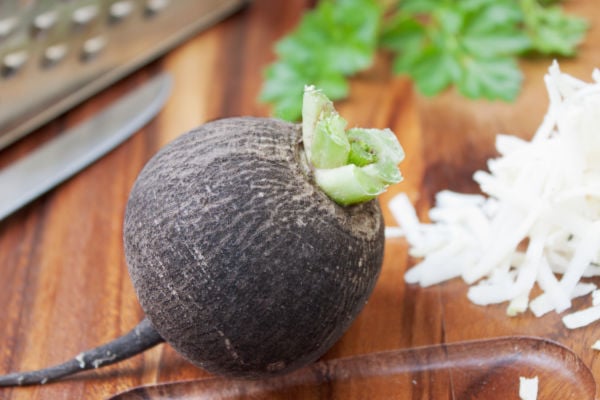
The black radish has a dark reddish-black skin and looks similar to beetroot in color, shape, and size. The flesh inside is white and crispy, offering a spicy, hot flavor. Imitating the taste of horseradish is possible with this vegetable.
The challenge with black radish is that most of the heat is in the skin. So, your options are to grate the entire vegetable and get a hot, spiced ingredient. However, the skin is very dark and won’t mimic horseradish effectively. You can peel the radish, but the taste will be a lot milder.
How much to use?
Use equal quantities when substituting black radish for horseradish.
5. Horseradish Sauce
For those who prefer to cook from scratch, this option won’t work for them. For everyone else, horseradish sauce that comes in a bottle from the grocery store is an option. Don’t expect to generate the same flavor from a packaged product; it will be noticeably less.
How much to use?
You’ll probably want to use 1.5 times the fresh quantity, but as with all the choices on this list, use less, taste test, and increase if necessary.
Tip: Vinegar neutralizes the reaction and stabilizes the flavor. It should be added immediately to freshly grated horseradish to produce a milder taste.
What does horseradish taste like?
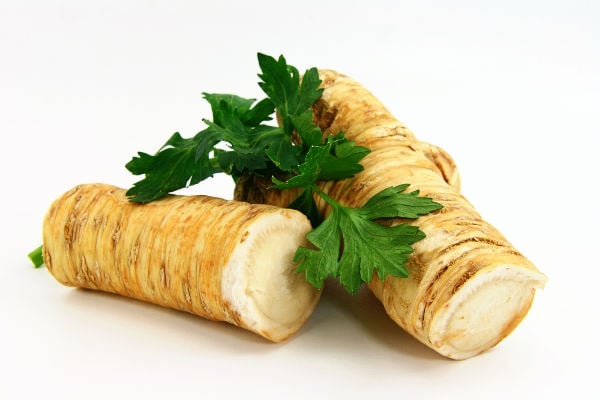
Whether you eat freshly grated horseradish root or the condiment, its flavor is pungent and spicy, with an overwhelming peppery taste. Although some ingredients, such as chili peppers, are hot on the tongue, horseradish tends to burn the sinuses.
Horseradish commonly appears as a condiment with roast beef in the U.K. and is also popular in Poland and many other parts of the world.
Common Uses for Horseradish
- salads
- cocktail sauce
- potato salad
- sandwiches
- dressings
- margaritas
Frequently Asked Questions
Any radish could be used as an alternative to horseradish. For a milder option, choose a daikon radish or the standard red variety. To raise the spice levels, choose a black radish, and use the skin as well as the flesh.
Wasabi provides a lovely kick of heat and spice in a Bloody Mary. Use one Tablespoon of wasabi to make four cocktails; grate in some ginger as well for extra spiciness.
Wasabi is a good option if you are okay with green sauce on your meat. Brown mustard is a better option if you want a similar flavor as well as a less vibrant color on the plate.
Summing Up
If you need a horseradish substitute, then you should find several options in your local supermarket. Wasabi, brown mustard, fresh ginger, black radish, and horseradish sauce all work well. Although these alternatives taste similar, some of them look much different. Keep this in mind when deciding which ingredient is the best for your dish.
Do you have a makeshift ingredient that gets used in place of horseradish? Let us know in the comments below.

Leave a Reply